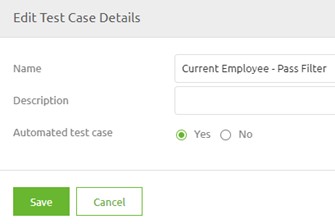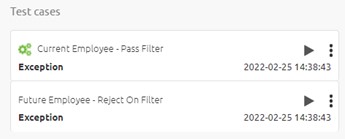Regression Testing
In this microlearning, we will focus on regression testing. At some point in time, you have build a large integration model with multiple complex flows. Some of these flows might be unintentially impacted by changes submitted to these flows. Therefore, you want to keep testing whether existing functionality is not impacted. This is called a regression test. When successfully conducting regression test you can be sure that it is save to deploy your solution on Production without impacting your existing integrations. The main functionality to do this within eMagiz is the automated flow test, which we will disucss in detail.
Should you have any questions, please contact academy@emagiz.com.
1. Prerequisites
- Basic knowledge of the eMagiz platform
- Understanding of the flow testing functionality
2. Key concepts
This microlearning centers around regression testing.
- By user regression testing, we mean: A test that is designed to verify whether existing functionality is not impacted by newly added functions.
3. Automated flow test
The purpose of automated flow tests is to prevent undesired impact on flows when applying certain changes. Everytime a new version of a flow is submitted, automated flow tests will be exectuded. This way, you can verify whether changes in the flow did not introduce problems on exisiting requirements. The remainder of this section will explain how to setup a automated flow test.
Configuration
To configure an automated flow test, you can select the option automated test case by opening the Details pop-up of a test case.

When choosing the option Yes and pressing Save, the overview of flow tests will reflect this change by showing an icon in front of the test case.

After configuring this, eMagiz will automatically execute the test case(s) upon creating a new version. This process happens in the background, so you don’t have to wait for it to finish.
Analysis on flow level
To see the results of the automated flow test(s) on flow level, you can navigate to the History tab. Here you will see the overall test status (of all the test cases combined), and it provides you with a button to Show the specific test results.

Analysis on release level
On top of that, eMagiz will show you an overview for all flows in your release, whether the test cases have failed, are still running, have no tests in them, or whether the test cases within a flow all passed. This overview is shown whenever you want to deploy or make a new release active.

Note that you can always view the test results overview of any older release by navigating to the Details pop-up and selecting the Test results tab.

4. Key takeaways
- Regression testing ensures that new changes do not negatively affect existing functionality.
- Automated flow testing within eMagiz helps streamline regression testing by automatically running tests whenever a new version is submitted.
- You can monitor the results of automated flow tests both at the flow level and release level to ensure the stability of your integrations.
- Setting up automated flow tests in eMagiz is straightforward, and the system provides detailed feedback on test outcomes to facilitate smooth deployments.
5. Suggested Additional Readings
If you are interested in this topic and want more information, please read the help text provided by eMagiz and see the following links:
